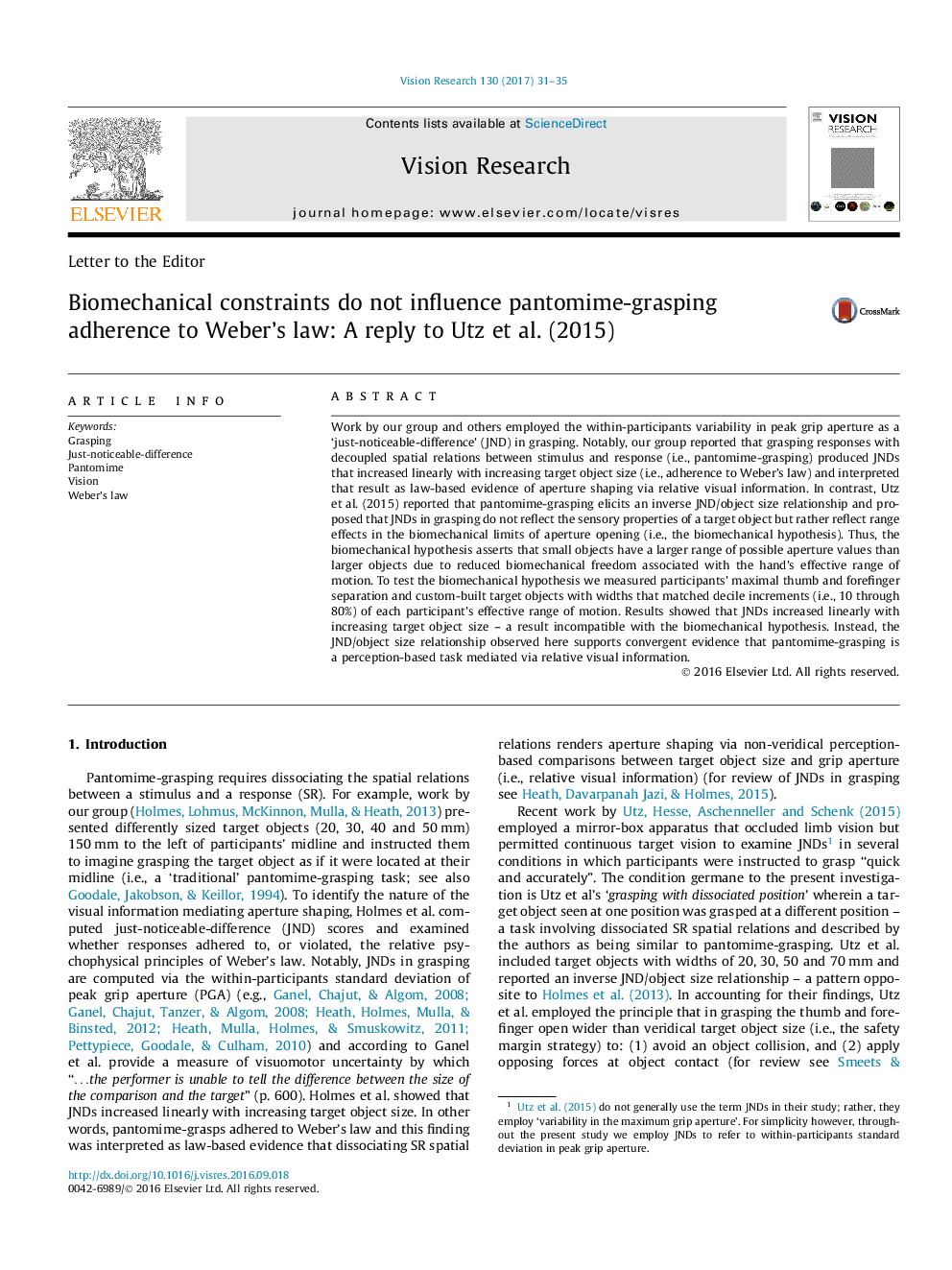| Article ID | Journal | Published Year | Pages | File Type |
|---|---|---|---|---|
| 5705929 | Vision Research | 2017 | 5 Pages |
Abstract
Work by our group and others employed the within-participants variability in peak grip aperture as a 'just-noticeable-difference' (JND) in grasping. Notably, our group reported that grasping responses with decoupled spatial relations between stimulus and response (i.e., pantomime-grasping) produced JNDs that increased linearly with increasing target object size (i.e., adherence to Weber's law) and interpreted that result as law-based evidence of aperture shaping via relative visual information. In contrast, Utz et al. (2015) reported that pantomime-grasping elicits an inverse JND/object size relationship and proposed that JNDs in grasping do not reflect the sensory properties of a target object but rather reflect range effects in the biomechanical limits of aperture opening (i.e., the biomechanical hypothesis). Thus, the biomechanical hypothesis asserts that small objects have a larger range of possible aperture values than larger objects due to reduced biomechanical freedom associated with the hand's effective range of motion. To test the biomechanical hypothesis we measured participants' maximal thumb and forefinger separation and custom-built target objects with widths that matched decile increments (i.e., 10 through 80%) of each participant's effective range of motion. Results showed that JNDs increased linearly with increasing target object size - a result incompatible with the biomechanical hypothesis. Instead, the JND/object size relationship observed here supports convergent evidence that pantomime-grasping is a perception-based task mediated via relative visual information.
Keywords
Related Topics
Life Sciences
Neuroscience
Sensory Systems
Authors
Joseph Manzone, Shirin Davarpanah Jazi, Robert L. Whitwell, Matthew Heath,
